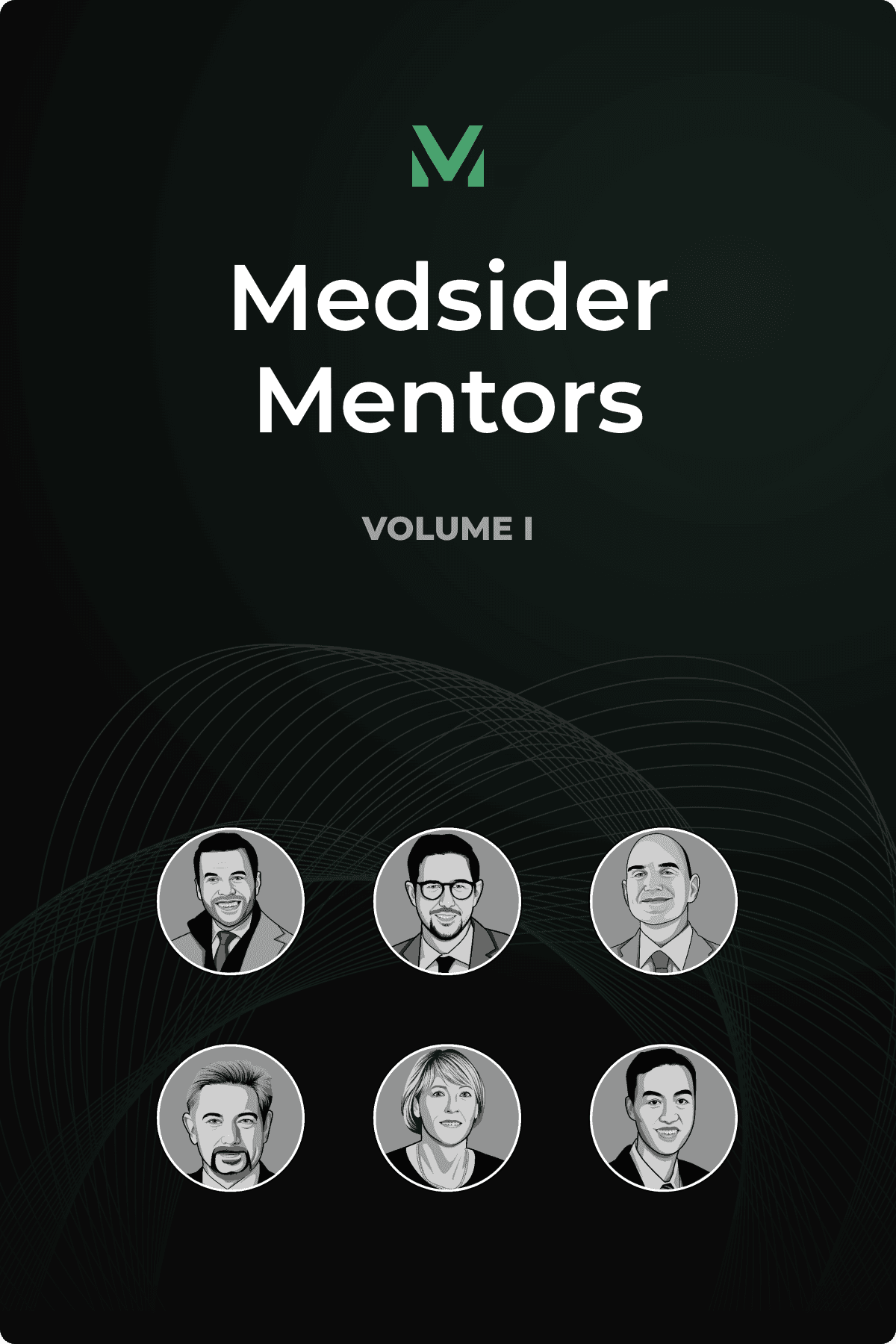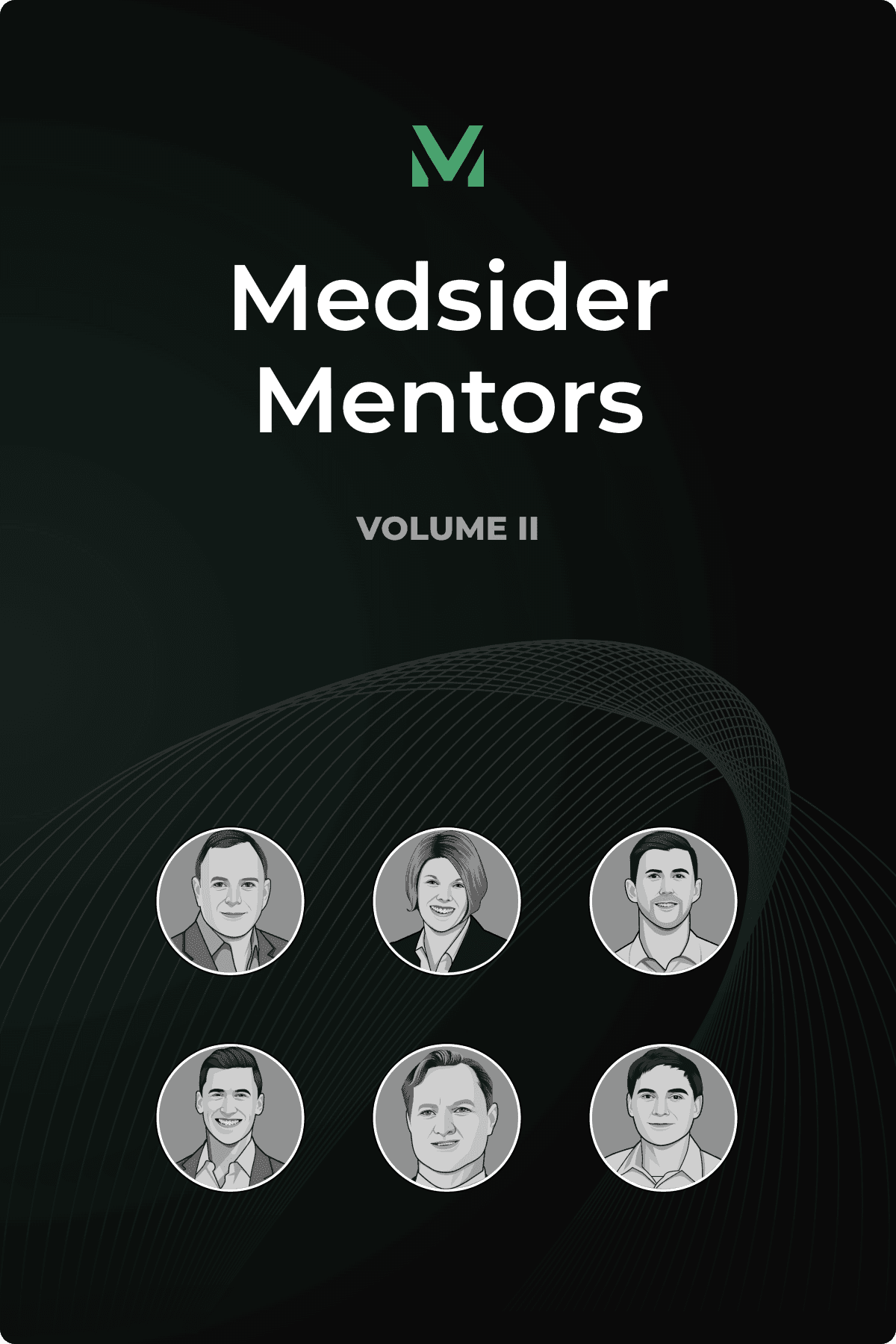You’re Never Too Small to be an Acquirer
Interview with Hera Biotech CEO Somer Baburek

Key Learnings From Somer's Experience
Global trial design isn’t a cost shortcut — it’s a strategy. FDA requirements allow flexibility in terms of where patients are enrolled; in fact, only half of study participants must be U.S.-based. By running portions of its studies in regions like Latin America and Puerto Rico, Hera Biotech can lower per-patient costs while pursuing parallel regulatory pathways. Approvals through agencies such as COFEPRIS can open multiple markets at once, stretching budgets without sacrificing data quality.
With investors, don’t chase prestige — chase alignment. “Smart money” from investors with deep domain expertise or name recognition can be alluring, but it isn’t always the best fit. Early on, Hera adjusted its positioning and outreach to attract investors who understood its science-driven model and shared its long-term goals. The best capital comes with clean terms, realistic expectations, and aligned incentives.
Use brand equity to grow before revenue. Hera completed three acquisitions in 18 months using equity rather than cash — adding competitive technology, a biobank worth roughly $8 million in trial savings, and a cervical-cancer screening platform. Moves like this are only possible when partners trust your reputation and transparency. In life sciences, stealth mode protects little if your IP is strong; credibility and visibility create far more leverage.In medtech, attention gravitates toward moonshots — robots, AI, and futuristic therapeutics promising to change everything.
Timing can make or break a startup. For Somer Baburek, it nearly broke hers.
She launched Hera Biotech in February 2020 — just weeks before the world shut down. “Hold your applause for my perfect timing,” she says. “I started it in February of 2020. Then in March, the world [felt like it] ended with COVID.”
But that pause became an unlikely advantage. With travel halted and calendars cleared, Somer spent those early months refining Hera’s business plan and clinical roadmap. “I have a beautiful business plan as a result of all of that time at home doing nothing,” she says.
That moment captures the mindset that’s guided her ever since. When the conventional path isn’t available — or doesn’t make sense — she builds a new one. After nearly a decade evaluating medtech startups as a venture capitalist, and another five years as a founder, Somer has learned that the “right” playbook often isn’t right at all.
Today, Hera Biotech is developing diagnostic tests for diseases that disproportionately affect women. Its first product, MetriDx, offers a non-surgical alternative to diagnostic laparoscopy for endometriosis. HERAfem, a point-of-care screening tool for cervical cancer, simplifies detection without a biopsy or lab processing. Both technologies analyze cellular and physical markers using adaptive machine-learning models — translating tissue data into clear clinical insights.
But the real story isn’t just about Hera’s technology. It’s about how a pre-commercial company that’s raised less than $5 million has built a global regulatory pathway, completed three strategic acquisitions, and positioned itself as one of the most capital-efficient startups in women’s health.
Guest
CEO of Hera Biotech
Somer Baburek is the co-founder and CEO of Hera Biotech, a company developing AI-driven tissue diagnostics for conditions that affect women, including endometriosis and cervical cancer. Before founding Hera, Somer spent nearly a decade in venture capital, evaluating early-stage medtech startups and shaping investment strategy at Targeted Technology Funds. She previously served as Director of Clinical Operations at Santalis Pharmaceuticals, managing regulatory and commercialization efforts.
Sponsor Message
We recently released the seventh volume of Medsider Mentors, which summarizes key learnings from the most popular Medsider interviews over the last six months.
We get it—keeping up with every Medsider interview isn’t easy. That’s why we created Medsider Mentors. These e-book volumes distill the best practices and insider secrets from top founders and CEOs, all in a downloadable, easy-to-digest format.
Check out the latest volume here. Premium members get free access to all past and future volumes, plus a treasure trove of other resources.
If you’re not a premium member yet, you should definitely consider signing up. We recently revamped Medsider with swanky new features, especially for our premium members. In addition to every volume of Medsider Mentors, you’ll get full access to our entire interview library, dating back to 2010.
You’ll also get Medsider Playbooks—curated guides packed with actionable insights on topics like fundraising, regulatory challenges, reimbursement strategies, and more.
And if you’re fundraising, don’t miss our exclusive investor database, featuring over 750 life science VCs, family offices, and angels. We’ve even created 3 custom packages to help you with your next fundraise.
Learn more by visiting Medsider Mentors.
Design Clinical Pathways for Global Adoption
From the beginning, Somer designed Hera’s clinical roadmap with one guiding rule: every decision had to make sense not just in the U.S., but everywhere the company might one day operate.
“Our company is building products that can be adopted globally, and that was always at the core,” she says. The result is a model of capital efficiency that balances regulatory pragmatism with clinical credibility — a blueprint for startups that can’t afford to make geography or trial design an afterthought.
Start Where the Data and Dollars Go Furthest
That mindset led to an unconventional call for a U.S. company: launch HERAfem, Hera’s cervical cancer screening tool, in Latin America first. “94% of cervical cancer deaths occur in low- to middle-income countries,” Somer explains. “The technology was developed in that environment, by people who understood the limitations of Pap smears and built a solution around them.”
Mexico became the starting point for a reason. Its regulatory agency, COFEPRIS, functions much like FDA but carries broader influence across the region. “A COFEPRIS approval opens doors into Guatemala, Honduras, Chile, the Dominican Republic — so many LATAM countries recognize it,” she says. “And there are other markets, like parts of Southeast Asia or India, that see it as a comparable review process. It can speed things up globally.”
At the same time, Somer points out that FDA requirements allow flexibility in where patients are enrolled. In a 500-patient study, for example, only half must be U.S.-based — a detail that dramatically changes the cost calculus. “You’re probably talking about $3,000 per patient in the U.S. versus maybe $1,000 in the Dominican Republic or Puerto Rico,” Somer notes. “Puerto Rico is great because it falls under FDA jurisdiction, but costs are much lower, and you get R&D tax incentives on top of that.”
Australia adds another lever: the government reimburses a portion of clinical-trial spending. “They’ll match your trial dollars,” she says. “You basically get double the clinical trial for half the cost.”
Still, Somer warns against chasing savings without context. “You have to consider prevalence,” she says. “If you can’t recruit patients efficiently, the overhead will eat up what you saved on per-patient cost. It’s not just about cheap data — it’s about the right data.”
Build the Right Team — and Align the Right Endpoints
That balance between precision and pragmatism extends to Hera’s choice of clinical partners. Somer learned early that working with a large, name-brand CRO doesn’t guarantee quality. “Let me tell you, you’re getting the C-squad,” she says. “You’re not the big account — you’re the one they train new people on.”
Instead, Hera partners with smaller, integrated CROs that manage regulatory, reimbursement, and clinical functions under one roof. “We use a boutique firm out of Atlanta called Tamm Net,” she explains. “They can do everything. Having all of these capabilities in the same house where you're not competing for attention with the J&Js or Bayers of the world is incredibly helpful because there's continuity of understanding.”
The real advantage, she says, is continuity. “When your regulatory, reimbursement, and clinical strategies are being built together, there’s a shared understanding of how each decision affects the next step,” Somer notes. “You don’t finish your trial and suddenly realize your endpoints don’t support your reimbursement claim.”
That mistake can be fatal for startups. “I’ve watched companies die mid-trial because they ran out of money or didn’t reach statistical significance,” she says. “You can’t afford to do it twice.”
For Hera, smart clinical strategy isn’t just about cost control — it’s about survival. By treating geography, design, and partnerships as parts of a single system, Somer has built a roadmap that gives Hera the best odds of finishing strong, not just starting fast.
Raise Money That Fits, Not Money That Flatters
When Somer left venture capital to start Hera Biotech, she assumed her investing experience would give her an advantage. In some ways it did. In others, it created blind spots she had to unlearn the hard way.
“The biggest lesson I learned is that my experience in a VC was not common,” she says. “We were truly early-stage investors — funding things that had preclinical or safety data. Now you hear people say early stage and they mean, ‘Are you six months from the FDA?’” She laughs. “I feel like I’m in The Princess Bride: I don’t think that word means what you think it means.”
The disconnect extended to fundraising itself. Like most founders, Somer began pitching what seemed like the obvious investors — women’s health funds. But the conversations rarely went anywhere. “People would say, ‘There are all these women’s health funds now. Why aren’t they funding you?’” she recalls. “Well, do your job, and we wouldn’t have to have women’s health funds.”
The real issue, she discovered, was structural. “If you look at their portfolios, they say women’s health, but it’s mostly direct-to-consumer or digital-health products. I’m not DTC. I’m not digital. I’m hard-science, life-science, traditional regulatory pathway.” The mismatch forced her to rethink Hera’s positioning entirely. “You have to know your audience really well,” she says. “We reframed Hera as an AI-driven precision-diagnostics company that focuses on women’s health — not the other way around.”
That shift in framing opened doors to investors who might otherwise have overlooked the company. It also led Somer to challenge one of the most repeated pieces of startup advice: don’t take stupid money. “Everybody says, ‘You don’t want stupid money.’ I’d say as long as stupid money is neutral money, it’s not bad money,” she explains.
To her, the difference comes down to alignment. “Bad” money carries predatory terms or unrealistic expectations. Neutral money may come from investors without domain expertise but who share your time horizon and risk profile. Smart money adds value — but it’s not the only kind worth taking. “Just because someone hasn’t invested in your space before doesn’t make them a bad investor,” Somer says. “If the terms are clean and the incentives are aligned, that’s good money.”
She also points out the gendered dynamic behind that calculus. “It’s easy to say ‘don’t take bad money’ when people are lining up to fund you,” she says. “But for women founders who are knocking on more doors and being told no more often, sometimes you have to think differently. If you’re starving, you’re going to eat what’s in front of you. You just have to make sure it doesn’t come with too many handcuffs or guardrails.”
Quoting her South Texan dad, she says: “If you’re not going to be the prettiest girl at the dance, you have to be the easiest to dance with to fill your dance card.” It’s tongue-in-cheek, but the logic holds: if you’re not the flashiest company in a fundraising cycle — and most aren’t — you need other advantages. Being responsive, transparent, and easy to work with often counts more than valuation hype.
For Somer, the real key is staying in motion. “You’ve got to be in the game,” she says. “If you’re not in the game, you’ll never get a name-brand investor.”
Her advice to founders evaluating term sheets is simple: focus on alignment, clean terms, and long-term fit — not prestige.

You’re Never Too Small to Think Like an Acquirer
When Somer started Hera Biotech, she thought her venture background might intimidate investors. Later, she realized it was her superpower. “At first, I tried to leave my VC experience at the door,” she says. “But then I thought — wait, I know how to build portfolios. Why wouldn’t I use that?”
That shift in mindset sparked one of Hera’s most distinctive plays: using equity, not cash, to acquire complementary assets and talent. In the last 18 months, the company has completed three strategic acquisitions — an unusual feat for a pre-commercial startup that’s raised just $4.7 million.
The first acquisition brought in Hera’s toughest competitor: the only other tissue-based technology for endometriosis diagnostics. “Now their lead scientist is our COO,” Somer says. “I would not want to compete against her.”
The second deal secured a large biobank, saving roughly $8 million in trial costs. The third added HERAfem, a cervical-cancer screening device already in the COFEPRIS approval process.
“Hera itself has only raised about $4.7 million. We've run really lean to get these things done. But the aggregate of dollars spent to develop the technologies that now sit under the Hera Biotech umbrella, is easily over $12 million.”
Each deal relied on the same principle: build enough brand trust that equity becomes real currency. “We positioned ourselves early as a hard-science company — we’re not chasing trends. We're defining new patient care pathways that are going to change the standard.”
It’s a strategy that turns visibility into tangible value. Hera’s reputation for integrity and clear communication gave Somer room to negotiate creative deal structures and align incentives with incoming teams. “We did a really good job of building and maintaining a solid reputation in the space, one of transparency, honesty, and integrity. Because of that, we've been able to utilize our stock for the majority of these purchases.”
That belief in visibility underpins another of Somer’s strongest opinions: stealth mode is almost always a mistake. “I have very strong opinions about stealth mode,” she says. “90% of the time, it’s stupid.” Her reasoning is pragmatic: In medtech, meaningful intellectual property is already protected through patents, not secrecy. “If you’re in life sciences and claim to be in stealth, I assume you don’t actually know what you’re doing yet,” she says. “You should have your IP, your processes, your scientific rationale, etc.”
For Somer, credibility compounds. Every publication, regulatory milestone, or partnership builds evidence that Hera Biotech isn’t just another early-stage company — it’s one executing with intention and discipline. “It helps you a bit — and no pun intended because of our logo — but you peacock,” she says. “It only works if there’s substance behind it.”
That substance has become one of Hera’s most valuable assets. The company’s brand reputation now functions like an extra line on the balance sheet — fueling partnerships, reducing capital needs, and attracting top talent drawn to a mission with momentum.
In an industry that often prizes secrecy and hype, Somer has visibility and transparency instead. For Hera Biotech, openness isn’t a marketing strategy — it’s part of the operating model.
Sponsor Message
After raising over $40M from corporate venture and cardiovascular key opinion leaders, FastWave Medical has progressed rapidly in the development of its next-generation intravascular lithotripsy (IVL) systems for complex calcific disease.
The market size for IVL is over $9 billion and the only player in the space was recently acquired for over $13 billion. So naturally, there’s a lot of investor interest in FastWave.
Given the continued demand to invest in FastWave, their team has opened up an investor waitlist for anyone interested in potentially owning a piece of the company.
The last time the company opened up an private placement, it closed nearly $20 million in less than a month. So if you’re interested in investing in one of the hottest cardiovascular startups, opt into their investor waitlist here.
You May Like These Articles
Medsider Premium
Become a premium member and unlock access to exclusive Medsider benefits.



